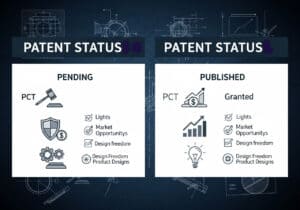In today’s crowded market, making your new product stand out is key. A value proposition helps do that. It’s a clear statement showing why customers should pick your product, highlighting your unique solutions. Unlike just describing your product, a strong value proposition shows what your business uniquely offers. This influences customers and helps increase conversion rates.
It’s vital to know the difference between a value proposition and other terms like mission statements, slogans, and taglines. A mission statement talks about your company’s goal. But, a value proposition focuses on what your product does for customers. Slogans are for marketing, and taglines sum up your brand’s spirit. Understanding these can help you create a value proposition that really stands out.
Key Takeaways
- A value proposition is a brief statement that explains why customers should prefer your offerings.
- It highlights the unique solutions and values your product brings to the table.
- Distinct from a mission statement, slogan, and tagline, it focuses on specific benefits.
- Essential elements of a value proposition include target audience and product benefits.
- A clear and concise value proposition boosts customer conversion rates and product success.
Understanding the Importance of a Value Proposition
In today’s market, having a strong value proposition is vital. It works as a powerful marketing tool and showcases the key benefits of a product or service. This gives a company an edge over others.
What is a Value Proposition?
A value proposition clearly states the unique benefits a product or service offers to customers. It is a short message, typically two or three sentences long. It tells potential customers about the product’s unique features. This promise of value prompts them to buy, attracts investors, and highlights the brand’s special features. Focusing on what makes a product different from others boosts marketing and leads to more sales and happy customers.
Why Every Product Needs a Strong Value Proposition
Having a strong value proposition keeps a business ahead in the market. Take Warby Parker as an example. Their focus on social justice and affordable designer glasses makes them stand out. A clear value proposition explains why a product or service is the best choice. It’s important to show this on all marketing platforms, like websites. This influences customers and makes marketing consistent. This strategy helps in attracting and keeping the ideal customers.
Identifying Your Target Audience
Understanding your target audience is the first step toward successful value propositions. We’ll look into how to pinpoint demographics and psychographics, do market research, and use customer feedback well.
Defining Demographics and Psychographics
Analyzing demographics and psychographics is key to identifying your audience. Demographics cover age, gender, income, education, and job. Psychographics, however, delve into people’s values, attitudes, and lifestyles. Using both helps create detailed profiles of typical market segment members.
There are four main ways to segment a market: geographics, demographics, psychographics, and behavior. This helps craft marketing campaigns that hit the mark with your audience’s desires and needs.

Conducting Market Research
Market research gathers critical audience insights. Tools like Google Analytics reveal user demographics, locations, how they find your site, and their interests. Knowing this shapes your message to meet audience expectations.
Harvard Business School highlights the value proposition’s role in defining a company’s customer value. It often means breaking into new markets with a unique offer. Thorough research ensures your value propositions are clear and targeted.
Utilizing Customer Feedback
Gathering customer feedback through surveys and reviews offers direct insight into customer needs and wants. This feedback is vital for adjusting your offerings to better satisfy market demands.
HubSpot finds most marketers target multiple audience groups, often focusing on three. Regular feedback collection and analysis make sure businesses meet their audience’s evolving needs. This fine-tunes value propositions for the greatest effectiveness.
Researching Your Competition
Understanding your competitors is key to standing out. By doing a detailed competitive analysis, companies find out what others do well and poorly. This reveals market gaps and chances to showcase their unique selling point.
Analyzing Competitors’ Value Propositions
Analyzing what your competitors offer takes several steps:
- Identify key competitors: start by pinpointing the big names in your field. Look at both direct rivals and newcomers trying to win over your audience.
- Evaluate competitors’ offerings: look at their products or services, focusing on what they do, the benefits, and how they price things. For instance, competitive edges might be free delivery, refunds, or personalized attention.
- Analyze customer feedback: check out reviews to see what people like and dislike. This highlights what’s working and what’s not in competitors’ offerings.
Identifying Market Gaps
After analyzing the competition, find the market gaps. This means seeing what’s missing and where customers’ needs aren’t met. Using a competitor profile chart helps show these gaps.
Focus on these areas in your analysis:
- Customer journey mapping: spot issues customers face and how you can do better. Look for chances to impress them more than your rivals.
- Innovative solutions: concentrate on what makes your product unique. Talk about how your offerings solve problems in a novel way, benefitting customers and highlighting your strengths.
- Clarify your Customer Value Proposition (CVP): your CVP should lead your marketing, showing the real benefits to customers. This makes your unique selling point stand out more.
A detailed competitive analysis helps spot market gaps and shapes your value pitch. Knowing the competitive scene lets businesses distinguish themselves. This ensures their market position is clear, straightforward, and unique.
Highlighting Your Product’s Strengths
Identifying your product’s strengths is key to showing its value. You must highlight the main features and benefits. This also includes the unique selling points (USPs). Doing so will help your product stand out in a crowded market. Customers will see why your product is better.
Key Features and Benefits
To show the value of your product, it’s crucial to communicate its main features and benefits. For example, Slack is popular among big companies because it’s easy to start using and grows quickly. Its strong set of features makes it valuable for big organizations.
Bloom & Wild, an online flower service, stands out by offering high-quality flowers, expert designs, and easy ordering. These points meet customer needs well, making Bloom & Wild a top choice for online flower orders.
Unique Selling Points (USPs)
It’s vital to pinpoint what makes your product unique to beat rivals. USPs emphasize special features and perks only your product has. For instance, Drip uses smart marketing automation to create real customer experiences. This special quality draws in eCommerce businesses.
Read more specifically on this:
PandaDoc stands out by making...
You have read 23% of the article. The rest is for our community. Already a member? Log in
(and also to protect our original content from scraping bots)
Innovation.world community
Login or Register (100% free)
View the rest of this article and all members-only content and tools.
Only real engineers, manufacturers, designers, marketers professionals.
No bot, no hater, no spammer.
FAQ
What is a Value Proposition?
A value proposition is a clear statement that shows why a product or service is special. It tells customers what makes your offer better than others.
Why Every Product Needs a Strong Value Proposition?
Every product needs a strong value proposition. This sets it apart from others, draws in customers, and delivers a clear, engaging message about its main advantages.
How to Define Demographics and Psychographics for Target Audience?
To define demographics, look at data such as age, gender, and income. Psychographics reveal more about customers’ values and lifestyle. Together, they create a full picture of who your audience is.
What Role Does Market Research Play in Identifying Target Audience?
Market research is key in learning about your audience’s likes and issues. It involves looking at demographics, studying customer feedback, and more to shape your offer precisely.
How to Utilize Customer Feedback in Crafting a Value Proposition?
Customer feedback uncovers what works and what needs improvement. Using surveys and interviews, you can gain insights that help shape a compelling value proposition.
How to Analyze Competitors’ Value Propositions?
To analyze competitors, examine their products, marketing, and customer responses. This lets you spot what they do well and where you can stand out.
How to Identify Market Gaps for Your Product?
Finding market gaps means looking at what competitors miss and uncovering unmet customer needs. This helps you show how your product fills those gaps.
What Are Key Features and Benefits to Highlight in a Value Proposition?
Highlight features like new tech, great customer service, and unique benefits. These should meet customers’ needs better than anyone else’s offer.
How to Identify Unique Selling Points (USPs)?
Identifying USPs involves understanding what makes your offering unique and superior. Highlighting these points makes your value proposition grab attention.
How to Conduct Customer Interviews and Surveys to Understand Their Needs?
Customer interviews and surveys ask about preferences and challenges. This method gathers essential insights for making your value proposition relevant and strong.
How to Identify Core Problems Your Product Solves?
Identify core problems by knowing what challenges your audience faces. Then align your product’s benefits to solve these effectively, making your value proposition hit home.
How Does Your Product Address Customer Issues?
Your product tackles customer issues with unique solutions. Explain how it offers better utility and satisfaction than alternatives.
What Are Value-Added Services and How Do They Enhance Your Product?
Value-added services include things like top-notch customer support or training sessions. They boost the value of your product, improving customer happiness and loyalty.
How to Craft a Memorable and Concise Proposition Statement?
Make a memorable, concise statement by simplifying complex info into a clear message. This should outline what your product does, its benefits, and what sets it apart.
Why is Clarity and Conciseness Important in a Value Proposition?
Being clear and concise grabs and keeps customer interest fast. A straightforward value proposition is more likely to persuade and resonate with them.
How to Position Your Value Proposition in the Market?
Positioning requires aligning your value proposition with business goals and what consumers expect. Understand the competition to find the best way to introduce your value to attract and keep customers.
What Are the Essential Elements of a Great Value Proposition?
A great value proposition needs a clear target audience view, a strong promise, benefits list, and real delivery on that promise. These make it believable and compelling.
How to Identify Competitive Edge and Innovative Features?
Point out what makes your product different and better. Concentrate on features that give unique benefits and solve problems effectively.
What Steps Are Involved in Crafting an Effective Value Proposition?
Steps include pinpointing customer issues, understanding the audience, detailing product benefits, and brainstorming with templates. This ensures the proposition is well-planned and impactful.
Why Ensure Internal Alignment Among Team Members?
Internal alignment ensures everyone is on the same page regarding marketing and development. It guarantees the brand promise is consistently communicated in all customer interactions.
What Are the Benefits of Using Value Proposition Templates?
Templates focus on the needed elements, making sure the proposition covers everything important. They guide through analyzing customer needs and how your product meets them well.
How to Test Your Value Proposition?
Test your value proposition by collecting customer feedback and looking at performance data. This process lets you adjust the offer to match market and customer changes.
How to Refine Your Value Proposition for Continuous Improvement?
Refine your proposition through regular reviews and updates based on feedback and evaluations. Continuous refinement keeps it relevant, compelling, and in line with your brand goals.
Glossary of Terms Used
Unique Selling Point (USP): a distinctive feature or benefit that sets a product or service apart from competitors, aimed at attracting customers by addressing specific needs or preferences.



























more real-world examples please
Actively seeking and integrating customer insights can enhance the alignment between what is offered and what is genuinely valued by the audience
great job of highlighting the benefits of using templates for brainstorming and internal alignment
Interesting read! But does a strong value proposition guarantee success or could market dynamics still outplay it?
Isn’t a value proposition just a fancy term for why should someone buy your product? Change my mind!
Doesnt a products value proposition evolve over time as market dynamics change? Isnt rigidity a recipe for disaster?
Absolutely, but clinging to flexibility can lead to inconsistency. Balance is key, not rigidity or chaos.